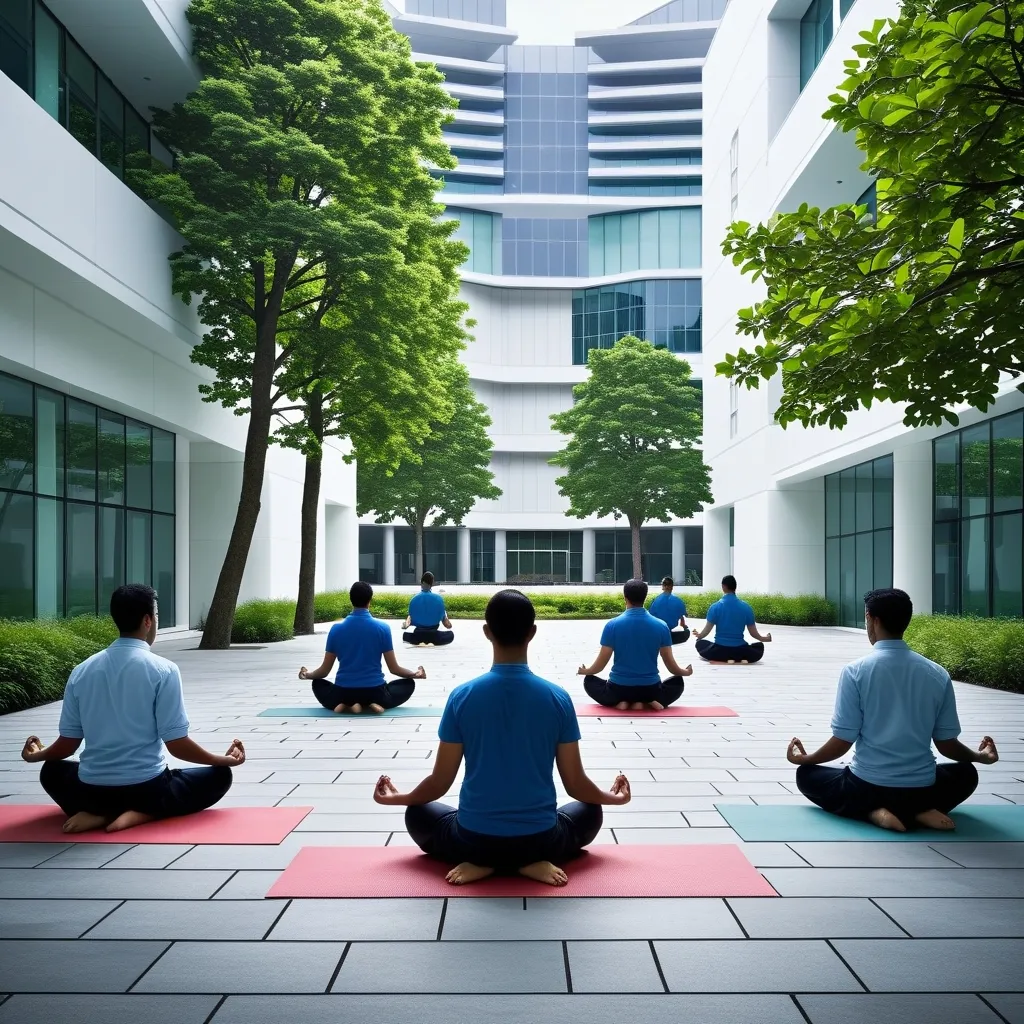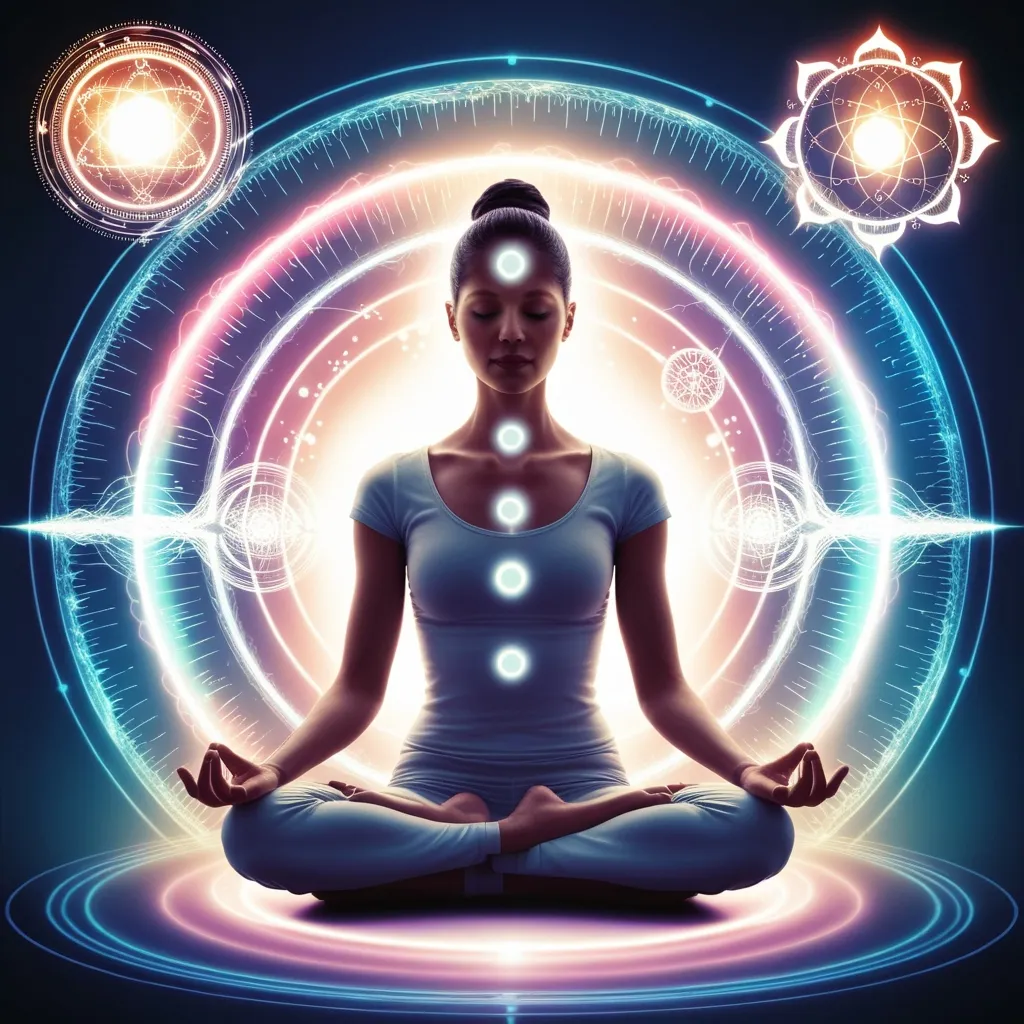Zen in the Silicon Valley: How Hindu Meditation is Transforming Tech Titans
Picture this: a bustling tech campus in the heart of Silicon Valley. Amidst the whir of servers and the clacking of keyboards, there’s a quiet revolution happening. Tech gurus, known for their relentless drive and laser focus, are turning to an unexpected source for balance and clarity – Hindu meditation techniques.
It’s not just another Silicon Valley fad. These ancient practices, honed over thousands of years, are providing a much-needed antidote to the high-pressure world of tech innovation. And let’s face it, in an industry where burnout is practically a rite of passage, finding inner peace is more than just a luxury – it’s a necessity.
So, what’s drawing these digital wizards to the world of mantras and mindfulness? For starters, it’s the promise of a quiet mind in a noisy world. Vedic meditation, with its personalized mantras, offers a way to slip into deep relaxation without breaking a mental sweat. It’s like a power nap for your brain, minus the awkward desk drool.
But it’s not just about feeling good – there’s solid science backing up these ancient practices. Studies have shown that regular meditation can do everything from lowering blood pressure to boosting brain power. For tech pros who often treat their bodies like debugging machines, these health benefits are a game-changer.
Take Transcendental Meditation (TM), for instance. Developed by Maharishi Mahesh Yogi (yes, the Beatles’ guru), it’s become a go-to for many in the tech world. The practice is simple: 20 minutes, twice a day, repeating a private mantra. It’s like rebooting your brain, but without the annoying Windows update screen.
And here’s the kicker – it’s not just about individual benefits. Many tech companies are starting to see meditation as a way to boost creativity and productivity across the board. It’s like upgrading the entire operating system of your workforce.
But let’s get real for a second. Starting a meditation practice can be tough, especially when your idea of downtime is binge-watching the latest sci-fi series. That’s where community comes in. Many meditation programs offer robust support systems, helping newbies stick with it even when their minds feel like a browser with too many tabs open.
Now, you might be thinking, “Isn’t this all a bit… woo-woo for the tech world?” But here’s the thing – these practices are surprisingly adaptable to modern life. There are online courses, apps, and even AI-powered meditation assistants. It’s like the ancient wisdom of the East got a Silicon Valley makeover.
And let’s not forget the personal stories. There’s something powerful about hearing how a once-frazzled coder found their zen through meditation. These tales of transformation are as inspiring as any tech success story – and often more relatable.
At the heart of many Hindu meditation techniques are mantras – sacred sounds that act like a mental reset button. In Vedic meditation, each person gets their own personal mantra. It’s like having a secret password to your inner calm.
But it’s not just about stress relief. These practices are deeply rooted in Hindu philosophy, drawing from ancient texts like the Vedas and Upanishads. It’s like accessing the source code of human consciousness.
As the tech industry evolves, it’s likely that meditation will become as common in office spaces as standing desks and kombucha on tap. With remote work on the rise and mental health taking center stage, practices that boost well-being are more crucial than ever.
So, what does this all mean for the future of tech? Imagine a world where innovation is driven not just by caffeine and deadlines, but by clarity and inner peace. Where the next big breakthrough comes not from pushing harder, but from looking deeper.
The tech gurus turning to Hindu meditation aren’t just seeking a quick fix. They’re tapping into a timeless wisdom that has the power to transform not just individuals, but entire industries. It’s a journey from bits and bytes to breath and being.
In the end, it’s about finding balance in a world of extremes. It’s about realizing that sometimes, the most powerful tool we have isn’t in our hands, but in our minds. And who knows? The next big tech revolution might just start with a simple “Om.”
So, the next time you’re stuck on a coding problem or facing a deadline crunch, why not take a page from the tech guru’s new playbook? Close your eyes, take a deep breath, and remember – even in the fast-paced world of tech, sometimes the best way to move forward is to sit still.
Who knows? You might just find that the path to innovation and the path to inner peace are one and the same. And in a world where change is the only constant, finding that stillness within could be the ultimate superpower.
Now, if you’ll excuse me, I’ve got a date with my meditation cushion. This article isn’t going to debug itself, after all.






